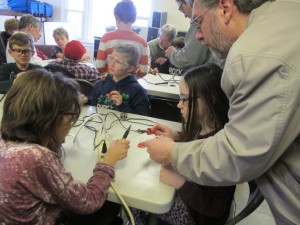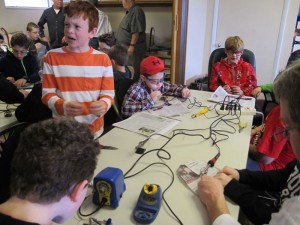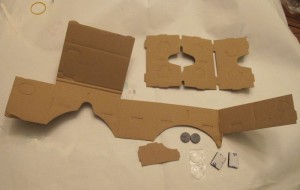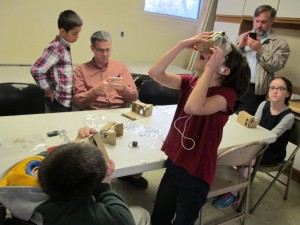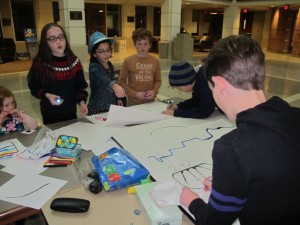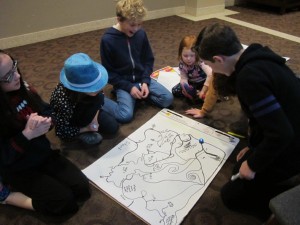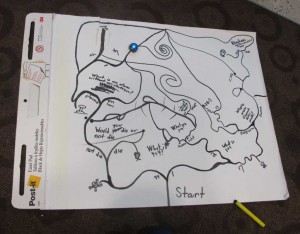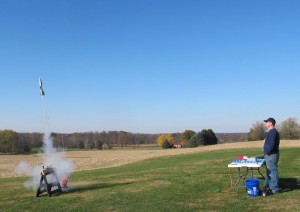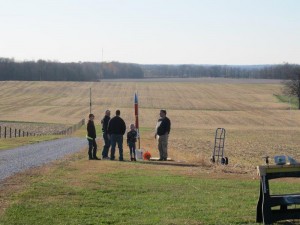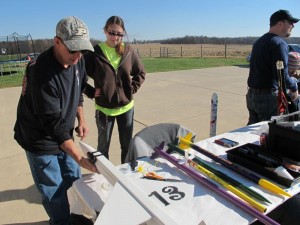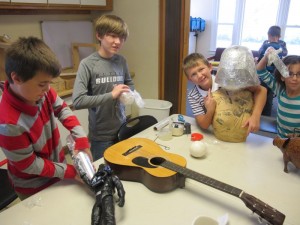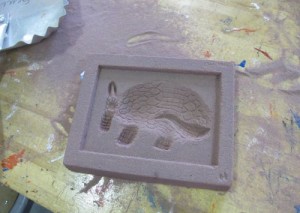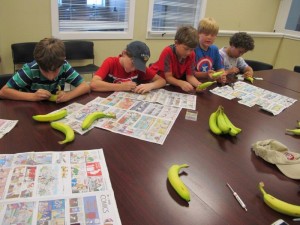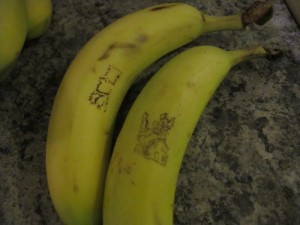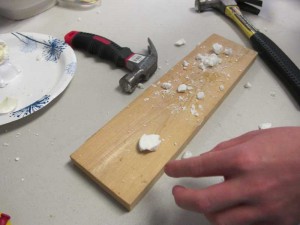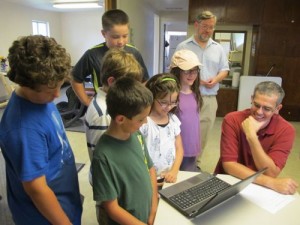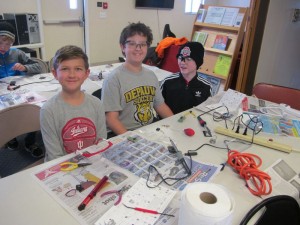
Despite the snow & cupid competition, we had some not-so-lonely hearts show up yesterday to continue learning and honing their soldering skills. This was our 2nd soldering session, during the first one the kids learned first by soldering wires together and then went on the kits. A little simpler kit with color changing/blinking lights was used this time for those that missed the first meeting or were quick to finish.

The LED chaser kit (Velleman MK173 rev2) was a medium difficulty build; in retrospect something easier for first timers would be better. But the coolness factor is very high, you can see it in this video link to Connor’s just after he finished. The socket helps protect the IC from overheating, but 44 solder joints is a lot to do. Solder pads are close together on both kits, not unusual, which offered opportunities for many kids to learn unsoldering techniques (some more than others). Glad we had a couple of solder suckers to clean up the bridging and over ambitious solderers! We also had one solder pad on one of the boards come loose but hard to tell if that was a circuit board problem or not.
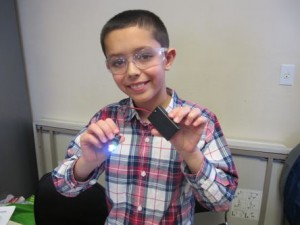
The color changing LEDs kit (Lux Spectralis 2) was definitely simpler with 24 solder points, but was bought on clearance so now hard to find. It has 38 modes of color/flashing to choose from and could be easily finished under an hour or less. The IC (ATtiny13a, no socket included) held up well to overheating, least from our experience. One kit was short a few parts, something we’ll plan for next time.
We’ll be doing more learning to solder classes, this is a skill that generated an lot of interest from both young and old. Our next meeting will be using App Inventor again, part of our series building up to Arduinos and other microcontrollers.
